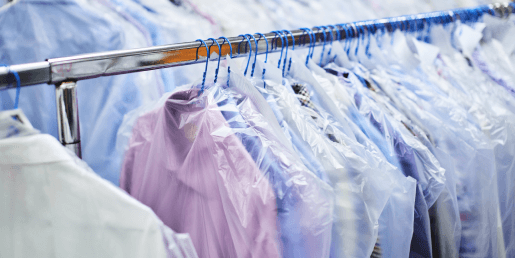
What you need to know to make sure your clothes last a long time.
Is Dry Cleaning Really Dry?
Most people already know that if you have clothes that need to be cleaned, but are made of more delicate fabric, a typical laundry and dryer machine process is a bad idea, because the clothes will often become damaged. In these cases, most people will take their clothing to a professional dry cleaner and have it done there since this always cleans out the clothes and leaves them cleaner than a typical laundry process.
But how does dry cleaning work? Is it really dry? Here’s what goes on when you drop off your clothes to be cleaned this way.
A Long History
First, you may be surprised to know that while dry cleaning is a very modern process now, the general concept has been in practice for literally millennia, with archaeologists finding some of the earliest “dry cleaners” in Pompeii! Dry cleaning was done in a particular way for centuries, although it eventually changed substances and methods in the 19th century.
Now, in the 21st century, dry cleaning continues to be a popular way to ensure that delicate clothes, especially important garments like wedding dresses, and other clothing with very delicate accents get a thorough cleaning without losing their color or undergoing physical damage. The secret to dry cleaning is all about chemistry.
Not Water, But Certainly Wet
First, the big mystery behind dry cleaning. Is it really dry? The answer, surprisingly, is “no.” Dry cleaning still involves liquids in the cleaning process, just not water. So the clothes still get “wet”; they just don’t get cleaned by water, which is the normal substance used, nor are they subjected to harsh scouring or spin cycle process the way clothes are normally washed in the average laundry process.
The secret to dry cleaning is the use of solvents. Back in ancient Rome, the solvent of choice was ammonia, a chemical most commonly found in urine. The mildly acidic properties of ammonia meant that clothes with stains or smells could be soaked in a solvent, and the stain and smell would “lift” out without needed excessive washing or scouring. In the 19th century, this technique was replaced with highly flammable chemicals like turpentine, that necessitated dry cleaning factories be moved out of towns or cities since the frequent fires that broke out at such locations could level streets.
Dry Cleaning Today
Modern dry cleaning still uses a solvent system, though better facilities have graduated from the chlorinated solvents of the 20th century to more eco-friendly solutions that still effectively clean clothes, but are neither carcinogenic nor environmentally toxic.
Dry cleaning, depending on the garment involved, may also use a much gentler version of a laundry machine to gently agitate the clothes and make the solvent more effective. In general, however, dry cleaning still involves a personal touch, such as removing accessories from the clothing that might be damaged by the solvents and then sewn back on, hand treating specific problem stains before treating the rest of the clothing.
So if you’re looking for premium, reliable service for your clothes, contact Beverly Hills Cleaners. We give you the quality you expect, and, if you don’t have time, deliver your clothes right to your door.



0 Comments